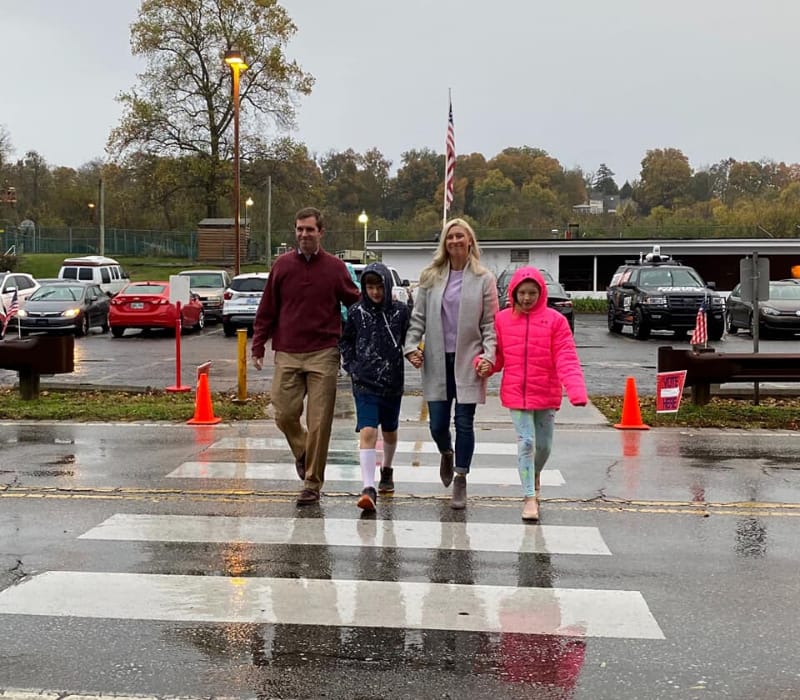

He was elected last November by a margin as thin as a surgical mask, just in time to steer his largely Republican state through a runaway pandemic, the resulting economic damage, and America’s most consequential reckoning with racial injustice since the 1960s. Working between those extremes-celebrity-grade adulation on one side, vitriol with violence on the other-is Andy Beshear, BA’00, the Vanderbilt alumnus and first-term Democratic governor of Kentucky. Afterward, several protestors hung the governor in effigy from a shade tree, as loudspeakers played an acoustic version of “God Bless the U.S.A.” Stuck to the scarecrowish likeness dangling from the noose were the words attributed to the assassins of Julius Caesar and Abraham Lincoln: Sic semper tyrannis. On a muggy Sunday during Memorial Day weekend, protesters objecting to the governor’s coronavirus-related restrictions on life and business marched to the doors of the Beaux-Arts mansion in Frankfort, where the governor lives with his family, and demanded his resignation. Some praised more than that, calling the chief executive “a hot Mister Rogers,” as well as endearments not quite fit for an alumni magazine. They praised his combination of firmness, compassion and authenticity. The governor’s fans responded by making him something of a rock star, vaulting him into national headlines and plastering his face on memes, T-shirts and socks. “We will get through this,” the governor told them most every night, “and we will get through this together.” updates became appointment television, with many in the Bluegrass State, and even beyond, pouring a cocktail and settling in for their daily dose of statistics, mandates, gentle scolding and reassurance. Last spring, as many Americans anxiously locked down against the blooming COVID-19 pandemic, a sizable number of Kentucky residents found a balm in their governor’s nightly briefings.

Andy Beshear, BA’00 (Bryan Woolston/AP/Shutterstock) KFF's data was based on a survey of 1,271 adults taken during mid-March.By Kevin Jones Kentucky Gov. Three out of 10 Black adults had personally seen someone being shot, the survey said, more than twice the rate for white adults. KFF said 41 percent of American adults live in households where there is a gun present - and in 44 percent of those homes, the weapon is kept in an unlocked location.īlack and Hispanic Americans reported far more experiences knowing someone who was shot, and generally feeling threatened by gun violence, than white Americans did. More than 24,000 used guns to kill themselves. In 2022, the organization said, 20,249 people died in homicidal, accidental or defensive shootings. On March 27, three children and three adults were shot dead at a primary school in Nashville, Tennessee.Īccording to the Gun Violence Archive, 11,631 people have been killed by guns so far in 2023, including 4,965 by homicide, accidents and incidents of defensive gun use, and 6,666 by suicide. Louisville Mayor Craig Greenberg detailed how he was shot at during his election campaign last year. Governor Andy Beshear said one of the victims was "an incredible friend" of his. The data was released one day after the latest mass shooting to hit the country, at a bank in Louisville, Kentucky, left five dead. Some 29 percent have bought firearms to protect themselves and their families. More than one third of those surveyed said they have avoided large crowds due to the possibility of gun violence. Gun-related violence - including mass shootings, suicides and accidents - has become so common in the United States that 84 percent of US adults say they have taken precautions to protect themselves and their families from the danger of being shot, according to health research group KFF, which released the survey. WASHINGTON - One in five American adults have a family member who was killed by a gun - including by suicide - and a similar percentage said they've been threatened with one, according to a survey released Tuesday. Guns for sale at WEX Gunworks in Delray Beach, Florida


 0 kommentar(er)
0 kommentar(er)
